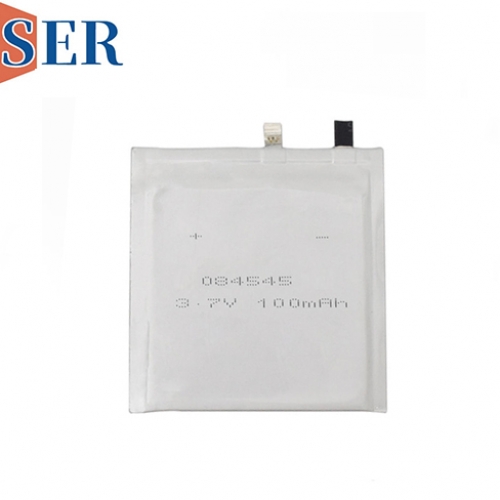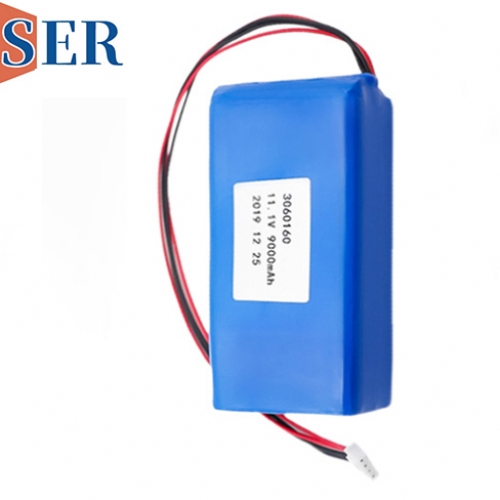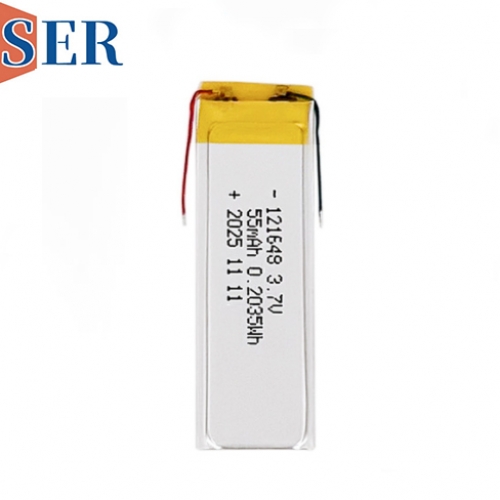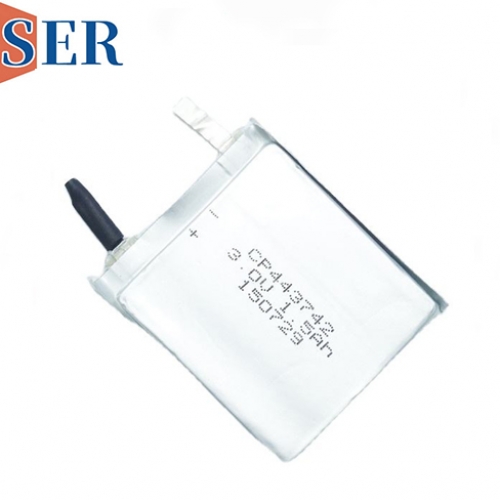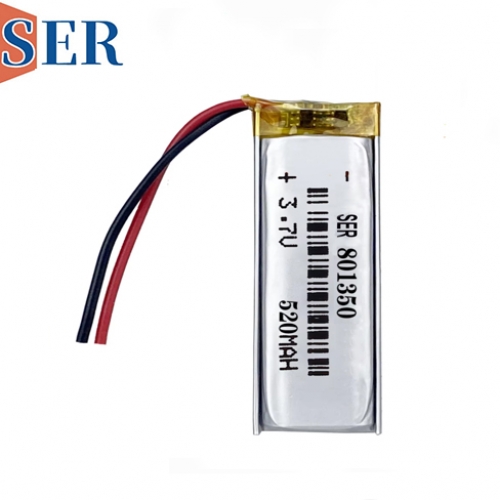Li/MnO₂ Pouch Battery (CP Series): Features, Advantages and Applications
Li/MnO₂ Pouch Battery (CP Series): Features, Advantages and Applications
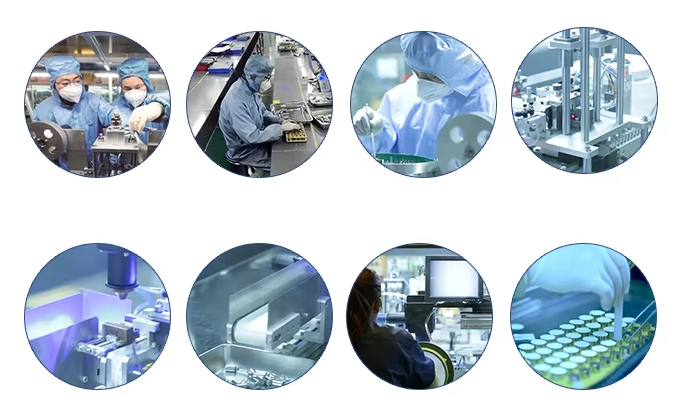
Introduction
In the dynamic landscape of energy storage solutions, lithium manganese dioxide (Li/MnO₂) pouch batteries, particularly those within the CP series, have emerged as a versatile and high-performance option. These batteries are designed to meet the evolving needs of various electronic devices, offering a range of features that set them apart from traditional battery technologies. This article delves into the key characteristics, competitive advantages, and diverse applications of Li/MnO₂ pouch batteries, highlighting their significance in modern electronics.
Understanding the Li/MnO₂ Pouch Battery
Definition and Composition
The Li/MnO₂ pouch battery, or CP series battery, is a type of primary lithium battery that utilizes lithium as the anode and manganese dioxide (MnO₂) as the cathode. The battery is encased in a flexible pouch, typically made of aluminum-laminated film, which provides protection while allowing for customizable shapes and sizes. This pouch design contributes to the battery's lightweight and compact nature, making it suitable for a wide range of applications.
Working Principle
During discharge, lithium ions migrate from the anode to the cathode through an electrolyte, generating an electric current. The manganese dioxide cathode undergoes a reduction reaction, while the lithium anode is oxidized. This electrochemical process provides a stable voltage output, typically around 3.0V for Li/MnO₂ batteries, making them ideal for devices requiring a consistent power source.
Key Features of Li/MnO₂ Pouch Batteries
1. Flexible in Size
One of the most prominent features of Li/MnO₂ pouch batteries is their flexibility in size. Unlike cylindrical or prismatic batteries, which come in standard sizes, pouch batteries can be customized to fit the exact dimensions required by a customer's electronic product. This customization is achieved through the flexible nature of the pouch material and the ability to tailor the internal electrode and separator layers.
Advantages of Size Flexibility:
Space Optimization: Manufacturers can design devices more efficiently, utilizing every available millimeter of space for other components.
Design Freedom: Engineers are not constrained by standard battery sizes, allowing for innovative and compact product designs.
Application-Specific Solutions: Batteries can be tailored to meet the unique power requirements and form factors of different devices, enhancing overall performance and user experience.
2. Strong Wide-Temperature Load Capacity
Li/MnO₂ pouch batteries exhibit excellent load capacity across a wide range of temperatures, making them suitable for use in harsh environmental conditions. This characteristic is crucial for applications where devices may be exposed to extreme heat or cold, such as outdoor electronic equipment, automotive electronics, and industrial sensors.
Performance in Wide Temperatures:
High-Temperature Stability: The battery maintains its performance and safety characteristics even at elevated temperatures, reducing the risk of thermal runaway or degradation.
Low-Temperature Operation: Despite the challenges posed by cold environments, Li/MnO₂ pouch batteries can still deliver reliable power, ensuring continuous device operation.
Consistent Voltage Output: The battery's ability to maintain a stable voltage across a wide temperature range ensures consistent performance of the connected electronic device.
3. Volume Saving Capacity
Compared to other battery types with the same capacity, Li/MnO₂ pouch batteries offer significant volume savings. This is primarily due to their high energy density and the efficient use of space within the pouch design. The absence of a rigid casing, as found in cylindrical or prismatic batteries, allows for a more compact form factor.
Benefits of Volume Saving:
Increased Device Portability: Smaller battery sizes enable the development of more portable and lightweight electronic devices.
Enhanced Device Functionality: The saved space can be utilized to incorporate additional features or components, improving the overall functionality of the device.
Cost Efficiency: Reduced material usage and smaller form factors can lead to cost savings in manufacturing and transportation.
4. Competitive Advantages in High-Drain and Low-Drain Applications
Li/MnO₂ pouch batteries excel in both high-drain and low-drain electronic products, offering a versatile power solution for a wide range of applications. High-drain devices, such as digital cameras, flashlights, and medical instruments, require batteries that can deliver high currents for short periods. Low-drain devices, like electronic shelf labels, smart sensors, and remote controls, need batteries that can provide a steady, low current over an extended period.
Performance in High-Drain Applications:
High Pulse Current Capability: Li/MnO₂ pouch batteries can handle high pulse currents, making them suitable for devices that require sudden bursts of power.
Quick Recovery: After a high-drain event, the battery quickly recovers its voltage, ensuring reliable operation for subsequent use.
Performance in Low-Drain Applications:
Long Shelf Life: The battery's low self-discharge rate allows it to retain its charge for extended periods, making it ideal for devices that are not used frequently.
Stable Voltage Output: Over the course of discharge, the battery maintains a relatively constant voltage, ensuring consistent performance of the low-drain device.
Applications of 3.0V Li/MnO₂ Pouch Batteries
The 3.0V Li/MnO₂ pouch battery's combination of features makes it well-suited for a variety of industries and applications. Below are some of the key sectors where these batteries are widely used:
1. Electronic Shelf Labels (ESLs)
Electronic shelf labels are becoming increasingly popular in retail environments, providing real-time price updates and product information. Li/MnO₂ pouch batteries are ideal for powering ESLs due to their long shelf life, stable voltage output, and compact size. These batteries ensure that the ESLs remain operational for extended periods, reducing the need for frequent battery replacements and maintenance.
2. Intelligent Transportation Systems
In the field of intelligent transportation, Li/MnO₂ pouch batteries are used to power various devices, such as traffic sensors, electronic toll collection systems, and vehicle tracking units. The batteries' wide-temperature load capacity and reliability in harsh environmental conditions make them suitable for outdoor applications. Additionally, their compact size allows for easy integration into transportation infrastructure without adding significant weight or bulk.
3. Smart Security Systems
Smart security devices, including surveillance cameras, access control systems, and alarm sensors, rely on reliable power sources to ensure continuous operation. Li/MnO₂ pouch batteries provide the necessary energy density and longevity to power these devices, even in remote or hard-to-reach locations. Their ability to withstand temperature variations and deliver consistent performance makes them a preferred choice for security applications.
4. Instrumentation
In the instrumentation sector, Li/MnO₂ pouch batteries are used to power a wide range of devices, from handheld test meters to industrial sensors. The batteries' high energy density and stable voltage output ensure accurate and reliable measurements, while their compact size allows for easy integration into portable or space-constrained instruments.
5. Consumer Electronics
Consumer electronics, such as wireless keyboards, mice, remote controls, and portable gaming devices, often require batteries that offer a balance between performance and size. Li/MnO₂ pouch batteries meet these requirements, providing a reliable power source that can fit into the sleek and compact designs of modern consumer devices. Their long shelf life also reduces the frequency of battery changes, enhancing the user experience.
6. Wisdom Medical (Smart Medical Devices)
The healthcare industry is increasingly adopting smart medical devices that rely on battery power for operation. Li/MnO₂ pouch batteries are used in devices such as wearable health monitors, portable diagnostic tools, and medication dispensers. The batteries' safety, reliability, and ability to maintain a stable voltage output are critical in medical applications, where accurate and consistent performance is essential.
Technical Specifications and Performance Metrics
To fully appreciate the capabilities of Li/MnO₂ pouch batteries, it is important to understand their technical specifications and performance metrics. Below are some key parameters that define the performance of these batteries:
1. Nominal Voltage
The nominal voltage of a 3.0V Li/MnO₂ pouch battery is typically around 3.0 volts. This voltage remains relatively stable throughout the majority of the discharge cycle, providing a consistent power source for connected devices.
2. Capacity
Battery capacity is measured in milliampere-hours (mAh) and indicates the amount of charge the battery can store. Li/MnO₂ pouch batteries are available in a range of capacities, allowing manufacturers to select the appropriate battery size based on the power requirements of their device.
3. Energy Density
Energy density refers to the amount of energy that can be stored per unit volume or mass of the battery. Li/MnO₂ pouch batteries offer high energy density, making them suitable for applications where space and weight are critical factors.
4. Self-Discharge Rate
The self-discharge rate is the rate at which a battery loses its charge when not in use. Li/MnO₂ pouch batteries have a low self-discharge rate, allowing them to retain their charge for extended periods. This characteristic is particularly important for low-drain applications where the battery may spend long periods in storage.
5. Operating Temperature Range
Li/MnO₂ pouch batteries are designed to operate within a wide temperature range, typically from -20°C to 60°C. This broad operating temperature range ensures reliable performance in various environmental conditions, from freezing cold to scorching heat.
6. Cycle Life (for Rechargeable Variants, if Applicable)
While the focus of this article is on primary Li/MnO₂ pouch batteries, it is worth noting that rechargeable variants also exist. For rechargeable batteries, the cycle life is an important metric, indicating the number of charge-discharge cycles the battery can undergo before its capacity significantly degrades.
Environmental and Safety Considerations
As with any battery technology, it is important to consider the environmental and safety aspects of Li/MnO₂ pouch batteries. Below are some key considerations:
1. Environmental Impact
Lithium batteries, including Li/MnO₂ pouch batteries, contain materials that can have an environmental impact if not properly disposed of or recycled. It is essential to follow local regulations regarding battery disposal and to participate in recycling programs when available. Manufacturers are also increasingly focusing on developing more sustainable battery technologies and recycling processes to minimize environmental impact.
2. Safety Features
Li/MnO₂ pouch batteries are designed with safety in mind, incorporating features such as:
Overcharge Protection: Prevents the battery from being overcharged, which can lead to thermal runaway or explosion.
Over-Discharge Protection: Stops the battery from being discharged below a safe voltage level, protecting the battery from damage.
Short-Circuit Protection: Prevents excessive current flow in the event of a short circuit, reducing the risk of fire or explosion.
Thermal Protection: Includes mechanisms to dissipate heat and prevent overheating during operation.
3. Transportation and Handling
When transporting or handling Li/MnO₂ pouch batteries, it is important to follow safety guidelines to prevent damage or accidents. This includes using appropriate packaging, avoiding physical impact or puncturing of the battery, and storing batteries in a cool, dry place away from direct sunlight and heat sources.
Future Trends and Developments
The market for Li/MnO₂ pouch batteries is expected to continue growing, driven by the increasing demand for reliable and high-performance energy storage solutions in various industries. Below are some future trends and developments to watch for:
1. Advancements in Battery Chemistry
Ongoing research and development efforts are focused on improving the energy density, cycle life, and safety of Li/MnO₂ batteries. This includes exploring new electrode materials, electrolytes, and cell designs to enhance battery performance.
2. Integration with IoT and Smart Devices
As the Internet of Things (IoT) continues to expand, the demand for small, low-power batteries to power connected devices will increase. Li/MnO₂ pouch batteries are well-suited for IoT applications due to their compact size, long shelf life, and stable voltage output.
3. Sustainability and Recycling
With growing concerns about environmental sustainability, there is a push towards developing more sustainable battery technologies and improving recycling processes. This includes using recycled materials in battery production and designing batteries that are easier to recycle at the end of their life cycle.
4. Customization and Tailored Solutions
The trend towards customization and tailored solutions in battery manufacturing is expected to continue. Manufacturers will increasingly offer bespoke battery designs to meet the specific needs of their customers, further enhancing the versatility and applicability of Li/MnO₂ pouch batteries.
Conclusion
Li/MnO₂ pouch batteries, particularly those within the CP series, represent a significant advancement in energy storage technology. Their flexible size, strong wide-temperature load capacity, volume-saving advantages, and competitive performance in both high-drain and low-drain applications make them a preferred choice for a wide range of electronic devices. From electronic shelf labels and intelligent transportation systems to smart security and medical devices, these batteries play a crucial role in powering the modern world.
As technology continues to evolve, the demand for reliable, high-performance, and sustainable energy storage solutions will only increase. Li/MnO₂ pouch batteries are well-positioned to meet these demands, offering a versatile and efficient power source for the next generation of electronic innovations. By understanding their features, advantages, and applications, manufacturers and consumers alike can make informed decisions about incorporating these batteries into their products and devices.

